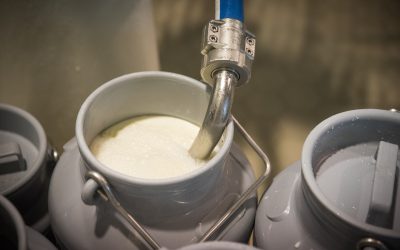Table of Contents
So, you’ve heard the term “PPC marketing” thrown around, but you’re not quite sure what it entails. Well, let me break it down for you. PPC, which stands for pay-per-click, is an online advertising model where advertisers pay a fee for each click on their ads.
In this article, we’ll explore the ins and outs of PPC marketing, how it works, and why it’s become such a popular strategy for businesses to drive traffic and generate leads.
Don’t worry if you’re new to the concept, we’ll guide you through it step by step.

Definition of PPC Marketing
PPC marketing, also known as pay-per-click marketing, is a type of online advertising model in which advertisers pay a fee each time their ad is clicked. It is a strategy that allows businesses to promote their products or services on search engines and various online platforms, and only pay when a potential customer actually clicks on their ad. It is a highly targeted form of marketing that aims to drive traffic to a website and generate leads or sales.
Explanation of PPC
PPC stands for pay-per-click, which refers to the advertising model where advertisers only pay when someone clicks on their ad. In PPC marketing, advertisers bid on specific keywords or phrases relevant to their target audience. When a user types in those keywords in a search engine or visits a website that displays PPC ads, the advertiser’s ad may appear. If the user clicks on the ad, the advertiser is charged a predetermined amount.
Explanation of Marketing
Marketing is the process of promoting and selling products or services, with the goal of reaching a target audience and generating revenue. It involves various strategies and tactics to create awareness, build brand reputation, and attract potential customers. Marketing can encompass a wide range of activities, such as market research, advertising, public relations, and customer relationship management. It plays a crucial role in driving business growth and success.
How Does PPC Marketing Work
Explanation of the Process
In PPC marketing, the process begins with keyword research. Advertisers conduct research to identify relevant keywords and phrases that their target audience might use when searching for products or services. These keywords are then used to create ad campaigns.
Once the keywords are determined, advertisers bid on them in an auction-like system. The highest bidder for a particular keyword will have their ad displayed when a user searches for that keyword. However, winning the bid does not guarantee an ad placement, as other factors such as keyword relevancy and ad quality are also taken into consideration by the ad platform.
When a user performs a search using the chosen keywords, the search engine or platform evaluates all the competing ads and determines their relevance and quality. The winning ads are then displayed to the user, usually at the top of the search results page or on relevant websites.
Types of Ads in PPC Marketing
There are several types of ads used in PPC marketing. The most common types include search ads, display ads, and video ads.
Search ads are text-based ads that appear at the top of the search engine results page when a user searches for a specific keyword. They typically consist of a headline, a description, and a link to the advertiser’s website.
Display ads are graphical ads that are shown on various websites within a network of sites that have partnered with the PPC advertising platform. They can be in the form of banners, images, or videos, and they are designed to attract the attention of users browsing those websites.
Video ads are ads that are displayed within video content, either before, during, or after the main video. They can be skippable or non-skippable, and they provide an opportunity for advertisers to reach a highly engaged audience.
Popular PPC Platforms
There are several popular PPC platforms that advertisers can use to run their campaigns. The most well-known platforms include Google Ads, Microsoft Advertising (formerly known as Bing Ads), and social media advertising platforms such as Facebook Ads and Instagram Ads. These platforms provide advertisers with tools and features to manage their PPC campaigns, including keyword research, ad creation, and performance tracking.
Benefits of PPC Marketing
Increased Brand Visibility
One of the key benefits of PPC marketing is that it can significantly increase brand visibility. By bidding on relevant keywords and displaying ads to a targeted audience, businesses can ensure that their brand is seen by potential customers who are actively searching for products or services. This can help increase brand awareness and recognition, leading to more website traffic and potential sales.
Targeted Advertising
PPC marketing allows businesses to target their ads to a specific audience based on factors such as location, demographics, interests, and search intent. This level of targeting ensures that the ads are shown to individuals who are more likely to be interested in the products or services being advertised. By reaching the right audience, businesses can maximize their chances of converting leads into customers.
Cost-effective
Compared to traditional advertising methods, PPC marketing can be highly cost-effective. With pay-per-click pricing, advertisers only pay when their ads are clicked, which means that they are directly paying for potential leads or customers. This provides a level of control and cost-efficiency, as advertisers can set a budget and only spend money on ads that generate results. Additionally, the bidding system in PPC marketing allows businesses to set their own maximum bid limits, ensuring that they don’t overspend.
Measurable Results
One of the advantages of PPC marketing is the ability to measure and track results. PPC platforms provide detailed analytics and reporting tools that allow advertisers to monitor the performance of their campaigns. Metrics such as impressions, click-through rates, cost per click, and conversion rates can be tracked and analyzed, providing valuable insights into the effectiveness of the ads. This data can be used to optimize campaigns, make informed decisions, and continuously improve the overall ROI of PPC marketing efforts.
Components of a PPC Campaign
Keyword Research
Keyword research is a crucial component of a successful PPC campaign. It involves identifying and selecting relevant keywords and phrases that align with the target audience’s search intent. By understanding the keywords that potential customers are using, advertisers can optimize their ads and increase the likelihood of reaching their intended audience.
Ad Creation
Ad creation involves crafting compelling and engaging ads that effectively communicate the value proposition of the product or service being advertised. Advertisers need to create attention-grabbing headlines, persuasive descriptions, and compelling calls-to-action. The ad copy should be aligned with the chosen keywords and designed to attract clicks and conversions.
Landing Page Optimization
The landing page is the webpage that users are directed to after clicking on an ad. It is crucial to optimize the landing page to provide a seamless user experience and maximize the chances of conversion. The landing page should be relevant to the ad, have a clear call-to-action, and be optimized for fast loading speeds and mobile responsiveness.
Conversion Tracking
Conversion tracking is essential for measuring the success of a PPC campaign. It involves setting up tracking codes or tags on the website to monitor specific actions taken by visitors, such as purchases, form submissions, or sign-ups. By tracking conversions, advertisers can determine which keywords, ads, or landing pages are most effective in driving desired actions, and make necessary adjustments to optimize their campaigns.
PPC vs. SEO
Differences in Strategy
PPC marketing and SEO (search engine optimization) are two distinct strategies used to drive traffic to websites. While both aim to increase visibility on search engines, they differ in their approach. PPC focuses on paying for ad placements and targeting keywords through bidding, while SEO focuses on optimizing website content and structure to rank organically in search engine results.
Complementary Roles
PPC and SEO can work together to enhance a website’s visibility and achieve better results. By combining PPC and SEO efforts, businesses can cover both paid and organic search channels, providing more opportunities to reach potential customers. PPC can provide immediate visibility and results, while SEO can help establish long-term search engine presence and improve organic rankings.
Targeting Immediate vs. Organic Traffic
PPC marketing is effective for targeting immediate traffic and driving instant results. Advertisers can choose specific keywords and bid on them to appear on search engine results pages or relevant websites, immediately reaching users who are actively searching for related products or services.
On the other hand, SEO focuses on optimizing a website to rank organically in search engine results. This process takes time and requires continuous optimization, but it can generate sustained organic traffic and long-term visibility for targeted keywords. SEO is especially beneficial for businesses looking to establish a strong online presence and attract organic traffic over the long term.
Common PPC Marketing Terms
Impressions
Impressions refer to the number of times an ad is shown on a search engine results page or a website within a PPC advertising network. Each time an ad is displayed, it counts as an impression, regardless of whether it is clicked or not. Impressions indicate the reach and exposure of an ad.
Click-Through Rate (CTR)
Click-through rate (CTR) is a metric that measures the percentage of users who click on an ad after seeing it. It is calculated by dividing the number of clicks an ad receives by the number of impressions it generates. CTR is an important metric as it provides insights into the effectiveness and relevance of an ad. Higher CTRs generally indicate that the ad is engaging and resonating with the target audience.
Cost Per Click (CPC)
Cost per click (CPC) is the amount an advertiser pays each time a user clicks on their ad. It is determined through a bidding system, where advertisers compete for ad placements by bidding on specific keywords. The CPC can vary depending on factors such as keyword competitiveness, ad quality, and the overall demand for the keywords.
Quality Score
Quality score is a metric used by PPC platforms to assess the relevance, quality, and performance of ads, keywords, and landing pages. It is calculated based on various factors, including click-through rate, ad relevance, landing page experience, and historical performance. A higher quality score indicates that an advertiser’s ads are relevant and valuable to users, and can result in higher ad rankings and lower costs.
Conversion Rate
Conversion rate measures the percentage of users who take a desired action, such as making a purchase, completing a form, or signing up, after clicking on an ad. It is a vital metric as it indicates the effectiveness of a PPC campaign in generating desired outcomes. By tracking and analyzing conversion rates, advertisers can identify areas for improvement and optimize their campaigns to drive more conversions.
Return on Investment (ROI)
Return on investment (ROI) measures the profitability and success of a PPC campaign. It is calculated by dividing the revenue generated from the campaign by the total cost of running the campaign, and then multiplying the result by 100 to get a percentage. A positive ROI indicates that the campaign is generating more revenue than the cost of running it, while a negative ROI indicates a loss. Tracking ROI helps advertisers understand the overall effectiveness and profitability of their PPC marketing efforts.
Best Practices for PPC Marketing
Setting Clear Goals
Before launching a PPC campaign, it is crucial to define clear goals and objectives. Whether the goal is to increase sales, generate leads, or drive website traffic, having specific goals helps to focus the campaign and measure its success. Clear goals also help with decision-making, budget allocation, and campaign optimization.
Targeting the Right Audience
Effective targeting plays a significant role in the success of a PPC campaign. Advertisers should identify their target audience based on factors such as demographics, interests, and search behavior, and then tailor their ads and keywords to appeal to that audience. By reaching the right people at the right time, advertisers can increase the chances of conversions and maximize their ROI.
Optimizing Ad Copy
Creating compelling and relevant ad copy is essential for capturing the attention of potential customers and driving clicks. Advertisers should focus on writing clear, concise, and persuasive headlines and descriptions that highlight the unique selling points of their products or services. Including relevant keywords and a strong call-to-action can further improve the effectiveness of the ad copy.
Tracking and Analyzing Performance
Regularly tracking and analyzing the performance of a PPC campaign is vital for optimization and achieving better results. Advertisers should monitor metrics such as impressions, clicks, CTR, conversion rates, and ROI to identify areas for improvement. By making data-driven decisions and continuously optimizing the campaign, advertisers can maximize the effectiveness and profitability of their PPC marketing efforts.
Common Mistakes in PPC Marketing
Poor Keyword Selection
Choosing the wrong keywords can significantly impact the performance of a PPC campaign. Advertisers should conduct thorough keyword research and selection to ensure that the chosen keywords are relevant to their target audience and have a reasonable search volume. Neglecting this step can result in wasted ad spend, low click-through rates, and inadequate targeting.
Lack of Ad Testing
Failing to test and optimize ad creative can lead to missed opportunities for improvement. Advertisers should create multiple variations of ads and test them to identify the best-performing ones. A/B testing can help determine which ad elements, such as headlines, descriptions, or even visuals, resonate better with the target audience, and allow for continuous improvement and refinement.
Ignoring Landing Page Optimization
Even if an ad is highly effective at driving clicks, a poorly designed or unoptimized landing page can result in low conversion rates. Advertisers should ensure that the landing page is relevant to the ad, has a clear call-to-action, and provides a seamless user experience. Optimizing the landing page for fast loading speeds, mobile responsiveness, and easy navigation can significantly improve conversion rates.
Neglecting Performance Analysis
Failing to analyze and interpret campaign performance data can hinder the success of a PPC campaign. Advertisers should regularly review metrics and analytics to identify trends, patterns, and areas of improvement. Understanding what works and what doesn’t can help optimize campaigns, allocate budgets effectively, and make informed decisions to drive better results.
Case Studies of Successful PPC Campaigns
Campaign A: XYZ Company’s Increase in Sales
XYZ Company, an e-commerce retailer, implemented a PPC campaign targeting specific product keywords with high purchase intent. By bidding strategically on these keywords, they were able to reach a highly targeted audience actively searching for products in their industry. The campaign resulted in a significant increase in website traffic, contributing to a 30% increase in sales over a three-month period.
Campaign B: ABC Business’s Boost in Website Traffic
ABC Business, a local service provider, launched a PPC campaign targeting specific geographic locations and relevant keywords in their industry. They optimized their ads to highlight their unique services and competitive pricing. As a result, they experienced a surge in website traffic, with a 50% increase in organic search traffic and a 75% increase in paid search traffic. This increase in traffic translated into a higher number of inquiries and lead conversions.
Conclusion
In today’s digital landscape, PPC marketing plays a crucial role in driving brand visibility, reaching a targeted audience, and generating measurable results. By leveraging pay-per-click advertising platforms, businesses can increase their brand visibility, attract potential customers, and achieve their marketing goals. With the right strategies, targeting, optimization, and analysis, PPC marketing can be a highly effective tool in expanding a business’s online presence and driving revenue growth. Embracing PPC marketing can help businesses stay competitive in the ever-evolving digital landscape and make a meaningful impact in the online marketplace.











